Abstract
Hypermetabolic burn patients are frequently in negative nitrogen balance despite provision of estimated caloric needs. We studied 18 thermally injured adult patients in order to evaluate the relationship of burn wound size to urea production and nitrogen balance. We selected data from 147 patient-days when the patients received 100 +/- 25% of their estimated caloric needs. Three significantly different burn size groups (by body surface area [BSA]) were identified by calculation of the catabolic index (CI): group 1, 0-10% BSA (CI = -0.1); group 2, 11-30% BSA (CI = 6.4); and group 3,31-60% BSA (CI = 10.5). The urine urea nitrogen (UUN) for groups 1,2, and 3 was 11.1, 18.9, and 25.3 gm/day, and nitrogen balance was 1.0, -3.9, and -5.8 gm/day, respectively. When nitrogen was given in a calorie:nitrogen ratio of 150:1, only those patients in group I were able to achieve positive balance. We conclude that large burn wounds are associated with increased ureagenesis and impaired nitrogen retention. The protein intake, at the customary calorie:nitrogen ratio of 150:1, may not provide adequate nitrogen to achieve equilibrium, even when energy demands have been met, in patients with burn wounds greater than 10% BSA.
Full text
PDF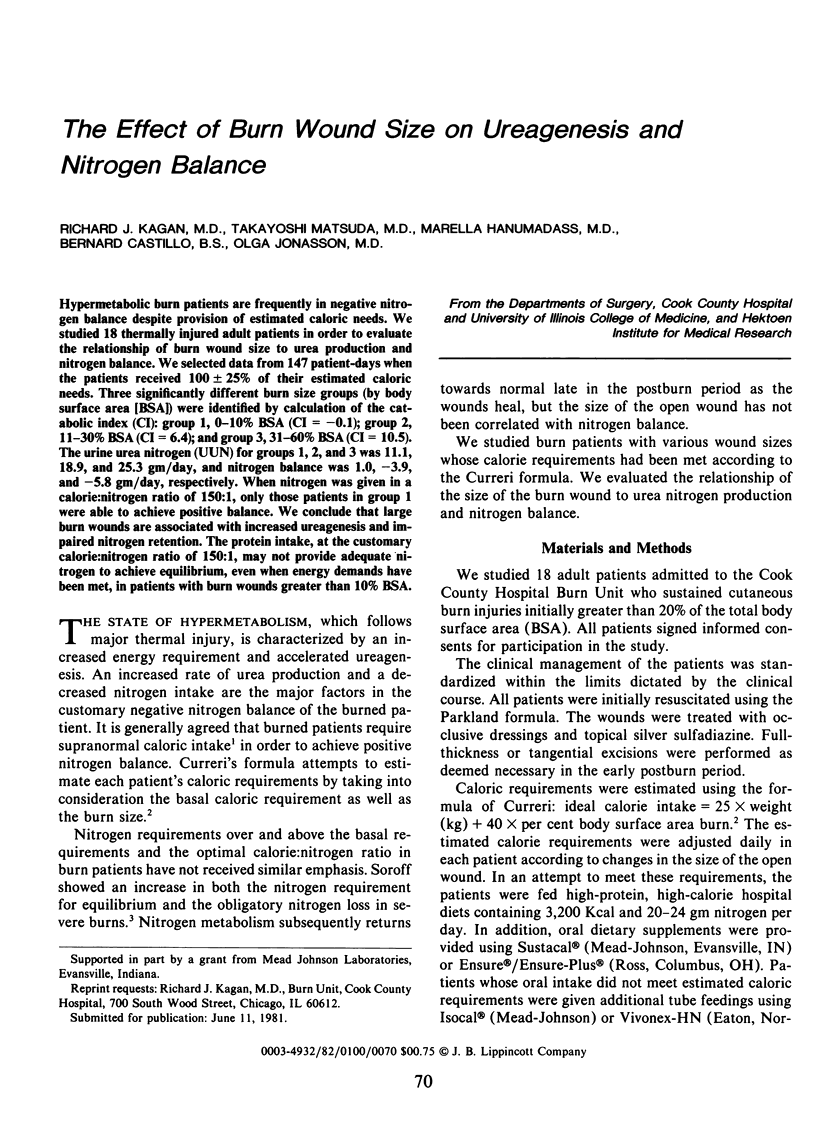
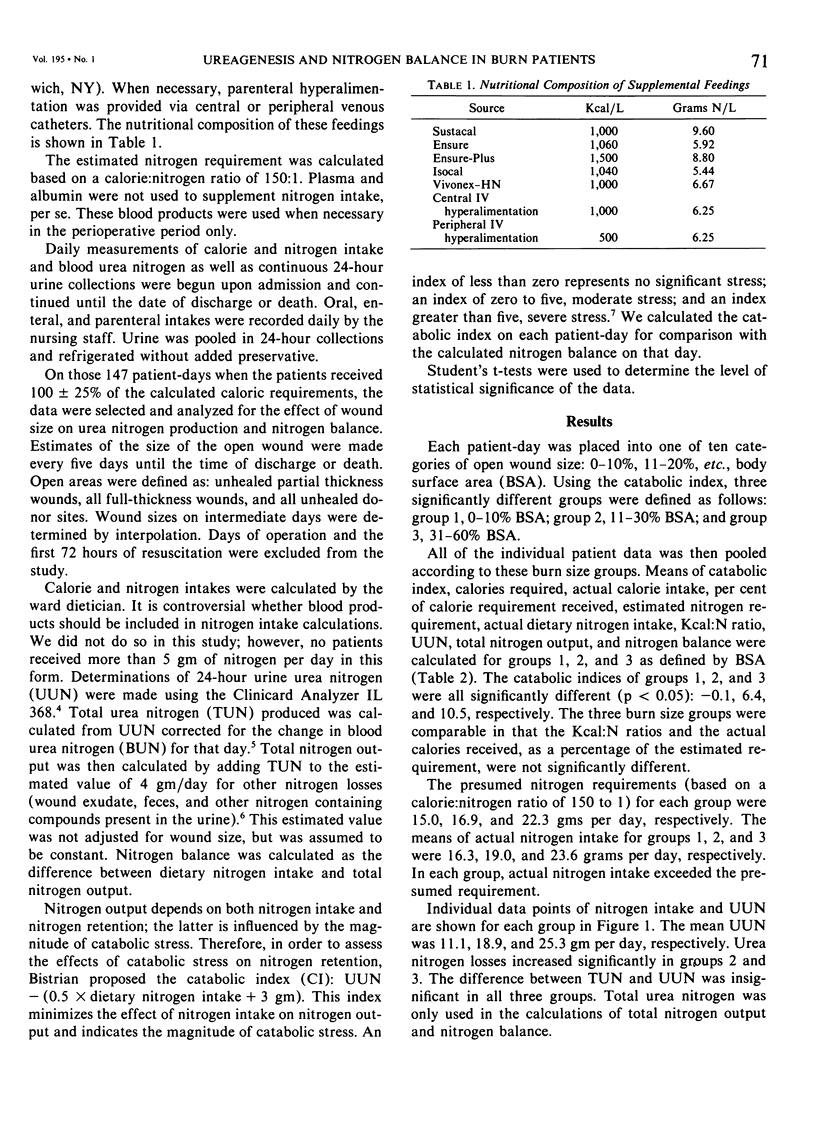
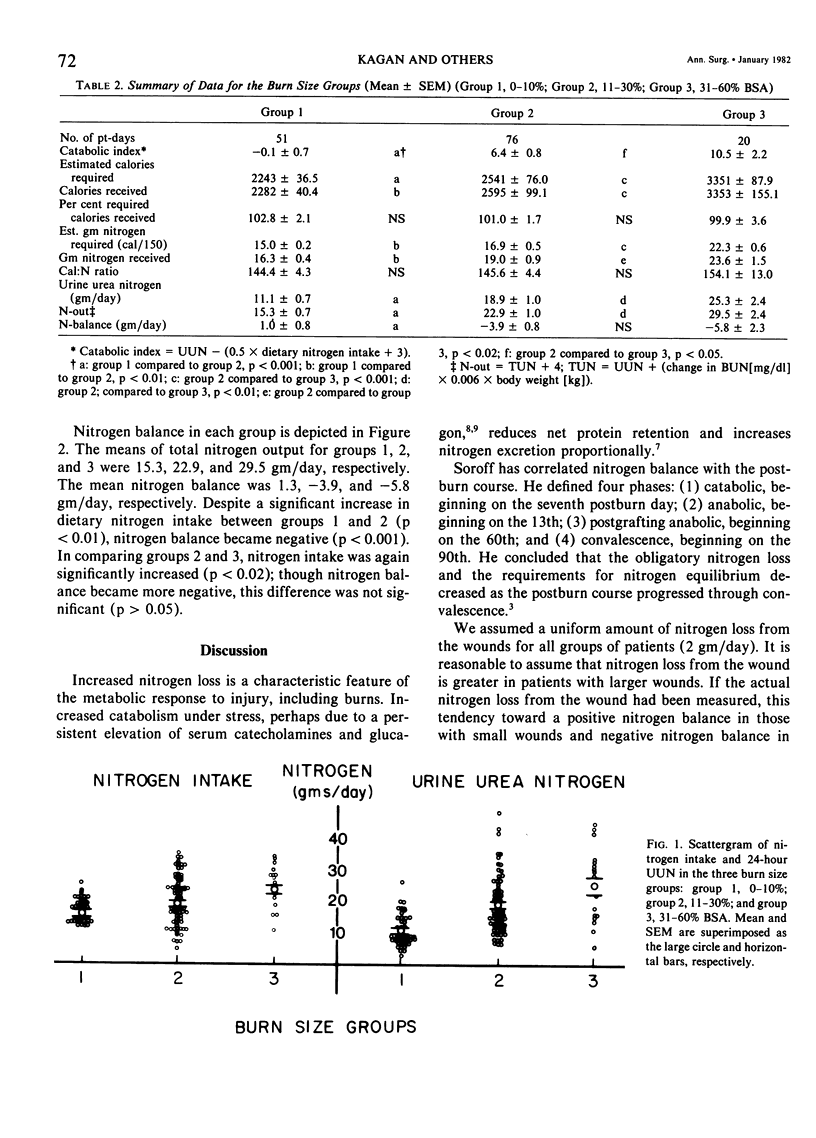
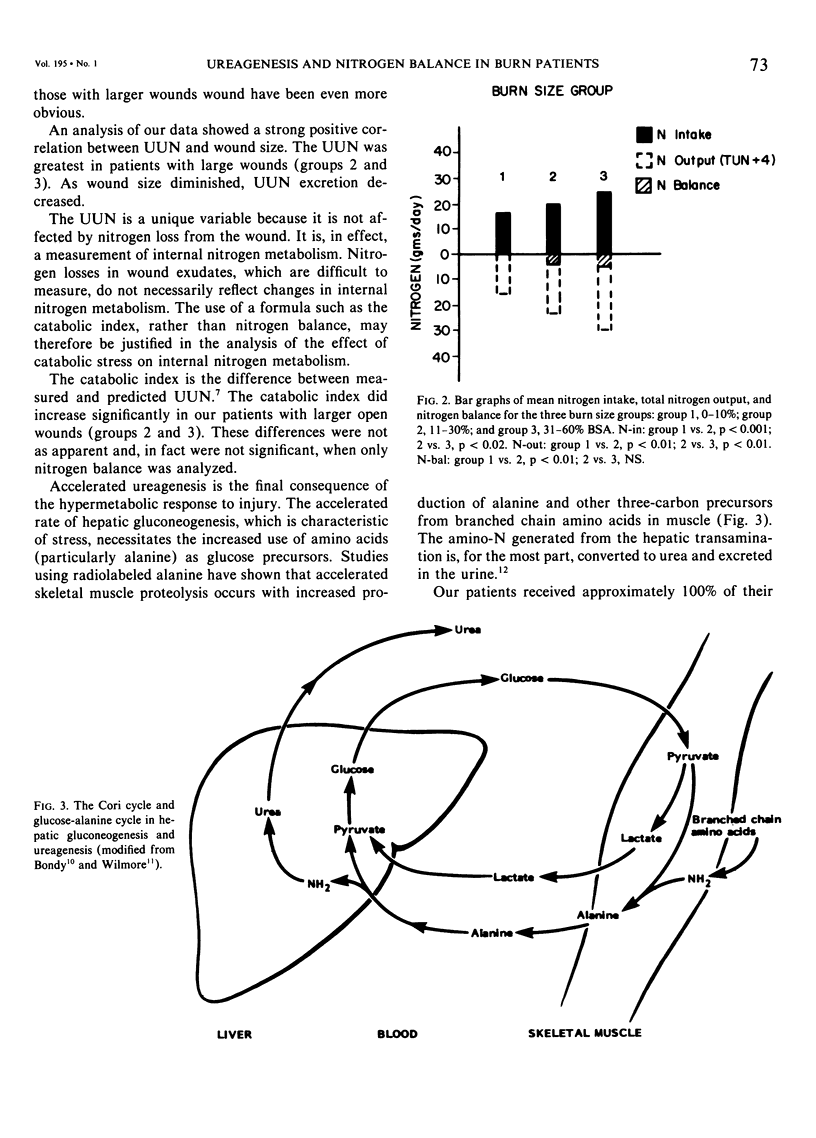
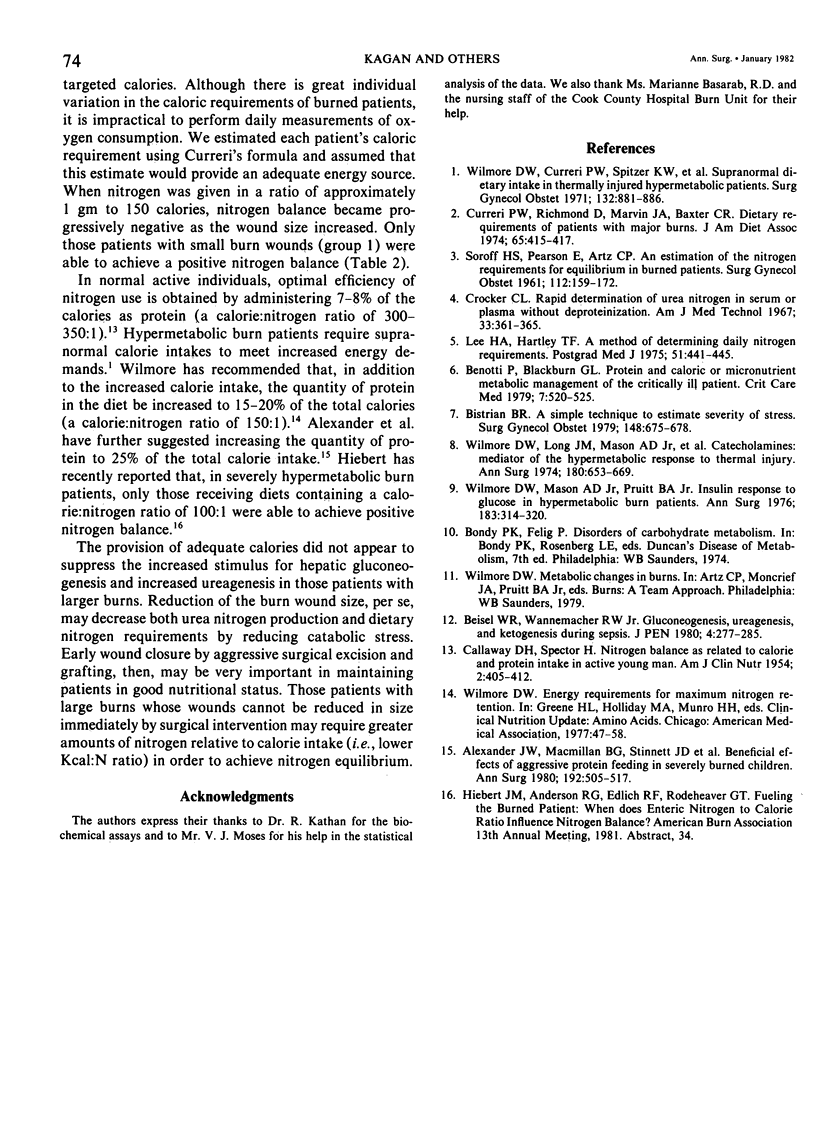
Selected References
These references are in PubMed. This may not be the complete list of references from this article.
- Alexander J. W., MacMillan B. G., Stinnett J. D., Ogle C. K., Bozian R. C., Fischer J. E., Oakes J. B., Morris M. J., Krummel R. Beneficial effects of aggressive protein feeding in severely burned children. Ann Surg. 1980;192(4):505–517. doi: 10.1097/00000658-198010000-00009. [DOI] [PMC free article] [PubMed] [Google Scholar]
- Beisel W. R., Wannemacher R. W., Jr Gluconeogenesis, ureagenesis, and ketogenesis during sepsis. JPEN J Parenter Enteral Nutr. 1980 May-Jun;4(3):277–285. doi: 10.1177/014860718000400307. [DOI] [PubMed] [Google Scholar]
- Benotti P., Blackburn G. L. Protein and caloric or macronutrient metabolic management of the critically ill patient. Crit Care Med. 1979 Dec;7(12):520–525. doi: 10.1097/00003246-197912000-00002. [DOI] [PubMed] [Google Scholar]
- Bistrian B. R. A simple technique to estimate severity of stress. Surg Gynecol Obstet. 1979 May;148(5):675–678. [PubMed] [Google Scholar]
- CALLOWAY D. H., SPECTOR H. Nitrogen balance as related to caloric and protein intake in active young men. Am J Clin Nutr. 1954 Nov-Dec;2(6):405–412. doi: 10.1093/ajcn/2.6.405. [DOI] [PubMed] [Google Scholar]
- Crocker C. L. Rapid determination of urea nitrogen in serum or plasma without deproteinization. Am J Med Technol. 1967 Sep-Oct;33(5):361–365. [PubMed] [Google Scholar]
- Curreri P. W., Richmond D., Marvin J., Baxter C. R. Dietary requirements of patients with major burns. J Am Diet Assoc. 1974 Oct;65(4):415–417. [PubMed] [Google Scholar]
- Lee H. A., Hartley T. F. A method of determining daily nitrogen requirements. Postgrad Med J. 1975 Jul;51(597):441–445. doi: 10.1136/pgmj.51.597.441. [DOI] [PMC free article] [PubMed] [Google Scholar]
- Wilmore D. W., Curreri P. W., Spitzer K. W., Spitzer M. E., Pruitt B. A., Jr Supranormal dietary intake in thermally injured hypermetabolic patients. Surg Gynecol Obstet. 1971 May;132(5):881–886. [PubMed] [Google Scholar]
- Wilmore D. W., Long J. M., Mason A. D., Jr, Skreen R. W., Pruitt B. A., Jr Catecholamines: mediator of the hypermetabolic response to thermal injury. Ann Surg. 1974 Oct;180(4):653–669. doi: 10.1097/00000658-197410000-00031. [DOI] [PMC free article] [PubMed] [Google Scholar]
- Wilmore D. W., Mason A. D., Jr, Pruitt B. A., Jr Insulin response to glucose in hypermetabolic burn patients. Ann Surg. 1976 Mar;183(3):314–320. doi: 10.1097/00000658-197603000-00018. [DOI] [PMC free article] [PubMed] [Google Scholar]


